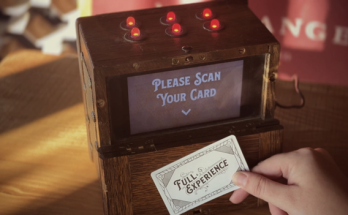Sustainable events carry a promise to reduce impact, use resources responsibly and do right by the communities they serve. But without proof, even the best intentions can fall flat. Today’s audiences, partners and sponsors want to know not just what happened, but what mattered. Platforms like Brown Paper Tickets, a ticketing service offering digital tools for seamless and sustainable event planning, help support transparency through streamlined logistics, reduced paper waste and tools that make it easier to follow through on sustainability goals.
Tracking and reporting are no longer optional. It is a key part of the story. From tallying waste diversion to documenting vendor practices, measurable outcomes give weight to the work and open the door for future support.
Setting the Stage for Transparency
Before anything can be measured, it has to be defined. Clear sustainability goals help shape not only how the event is produced, but also how success is tracked. It may include reducing landfill waste by a specific percentage, sourcing a minimum number of local vendors or hitting a target for digital engagement over printed materials.
Once those goals are set, the next step is making sure every partner is aligned. From caterers and AV teams to volunteers and sponsors, all parties play a role in contributing data and upholding practices that support the plan. When measurement is part of the culture, not just a back-end formality, teams are more likely to gather the details that matter. Digital systems support this process by centralizing information and reducing the need for physical tracking tools. Pre-event surveys, digital contracts and vendor onboarding materials can all set the expectation that tracking can be part of the experience, not an afterthought.
Tools That Keep It Simple
No one wants reporting to feel like busywork. For sustainability metrics to be useful, and need to be accessible, reliable and easy to collect during fast-moving event schedules. That’s where tech plays an essential role. Digital check-in systems, waste monitoring apps and web-based volunteer tools all offer ways to capture real-time data without slowing down operations. QR code signage can drive feedback and participation, while attendee surveys, sent after the event, can help evaluate behavioral impact.
Mid-sized and community-based organizers often benefit from tools that combine multiple functions. Platforms like Brown Paper Tickets provide access to event dashboards, registration data and communications tools in one place. These systems simplify coordination, reduce duplicate data entry and support cleaner reporting once the event wraps.
Why Post-Event Wrap-Ups Matter
What happens after the event is just as important as what happens on-site. A post-event wrap-up is the bridge between intention and proof. It’s where numbers become stories and partners see the outcome of their support. Well-designed reports go beyond bullet points. They highlight waste diversion totals, vendor highlights, energy usage and social outcomes in a format that speaks to different audiences.
The data may be used in ESG updates or board presentations for sponsors. For attendees, it might show up in a thank-you email or recap post that builds trust and loyalty. Wrap-ups also help teams improve. Tracking what worked, where waste occurred or what systems caused friction can lead to better planning in the future. That feedback loop turns reporting into a tool for continuous growth, not just a marketing deliverable.
Attracting the Right Partners
Sustainability reporting isn’t just about documentation. It’s about differentiation. Events that can show results are more likely to attract like-minded partners. Sponsors, media outlets and vendors want to align with efforts that go beyond good intentions.
When organizers can demonstrate clear sustainability wins, whether that’s a 40% drop in landfill waste, 75% local vendor sourcing or full digital ticketing, they stand out in a crowded field. These numbers offer proof of purpose and provide entry points for conversations with grant funders, venue partners and government collaborators who prioritize shared values. In many cases, past reporting becomes a credential. It signals that the team has the experience and infrastructure to follow through, even under tight timelines or resource constraints.
Telling a More Human Story
Not everything that counts shows up in a spreadsheet. While data anchors the report, storytelling brings it to life. Organizers are increasingly blending statistics with personal moments, like a vendor who reduced plastic use, a volunteer team that sorted compost or an attendee who changed behavior after learning something new.
These stories humanize numbers and show how sustainability becomes real in the hands of people. Including quotes, images, or short videos from the event adds texture and drives emotional engagement. Platforms support this kind of follow-up by enabling direct communication with attendees and offering systems that simplify outreach. When storytelling tools are built into the platform, it’s easier to carry the message forward without starting from scratch.
Keeping the Momentum Going
Reporting doesn’t need to be confined to a final PDF. The most successful sustainability communications are ongoing. That might look like a series of social media updates, a newsletter to attendees, or a live Q&A with vendors about how the event supported their efforts.
Each update keeps the mission front and center, while encouraging continued involvement. It also gives stakeholders a sense that they’re part of something bigger, something that didn’t disappear when the lights went out. That sense of continuity strengthens the community around the event and reinforces credibility in the eyes of future partners.
A Tool, Not a Task
When done well, sustainability reporting is less of a requirement and more of a resource. It helps teams see their progress, spot new opportunities and tell a stronger story with every event they produce. The key is to make tracking part of the planning process, not a scramble at the end. With the right tools, clear goals and consistent communication, organizers can turn every data point into a building block for better outcomes. When ticketing platforms help remove logistical roadblocks, organizers are free to focus on what counts, designing experiences that are good for people, the planet and the partners who help make them happen.




